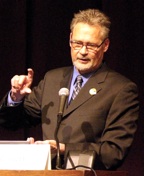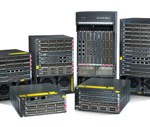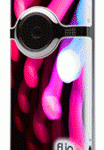Apr07
Andrea Meyer
Point: Take a Systems Approach to Innovation
Story: I had the opportunity to ask Bill Reinert, national manager of advanced technology at Toyota Motor Corporation, how he manages innovation. His answer was multi-faceted, so I’ll describe his ideas over several blog posts. First, let’s look at the numerous innovations that Reinert and his team integrated into the Toyota Prius hybrid automobile. For the 2010 Prius, Toyota took a systems approach to innovation. That is, rather than simply changing one subsystem, the company redesigned many aspects of the car to achieve the end goal of fuel economy. The Prius isn’t just a regular Toyota car with the combustion engine swapped-out for a hybrid drive system.
of advanced technology at Toyota Motor Corporation, how he manages innovation. His answer was multi-faceted, so I’ll describe his ideas over several blog posts. First, let’s look at the numerous innovations that Reinert and his team integrated into the Toyota Prius hybrid automobile. For the 2010 Prius, Toyota took a systems approach to innovation. That is, rather than simply changing one subsystem, the company redesigned many aspects of the car to achieve the end goal of fuel economy. The Prius isn’t just a regular Toyota car with the combustion engine swapped-out for a hybrid drive system.
To achieve the best possible fuel economy, the 2010 Prius has extensive aerodynamic features. The front, sides, top, back, and bottom are all designed to minimize drag-inducing air turbulence. The changes are much more than cosmetic. Reinert’s team replaced the rarely-seen rough underside of a normal car with smooth aerodynamic panels and two little winglets that reduce drag in the air that passes between the road and the car. Even the wheelhouse liner and shape of the wheels help reduce the drag. The result is that the Prius’ shape gives it a lower coefficient of drag than the “sleek-looking” sports cars on the road.
To reduce fuel-guzzling weight, the team made the battery an integral structural part of the car, not just a bolt-on box. Nothing escaped the team’s scrutiny. The team even improved the interface between the car and driver. The car now provides real-time feedback on fuel consumption and power system activity — something that hypermilers love. Specifically, the new 2010 Prius offers three performance modes in which it can be driven, each at the touch of a button. The car can be driven in EV-Mode (running off the battery alone for about 10 miles), Power Mode for snappy acceleration, and Eco Mode for fuel-sipping energy conservation. The different modes actually change how the car responds to the gas pedal: Eco Mode means that even a lead-footed driver gets better gas mileage. Finally, the new Prius has a solar-powered fan on its roof that cools the cabin temperature so that drivers don’t have to blast the air conditioning when first entering the car.
In all, Toyota created more than 1000 patents during the development of the Prius, resulting in an EPA estimated city/highway mpg rating of 50 in the city, 49 on the highway and a combined 50 mpg.
Action:
- Think about the ultimate purpose of some proposed or available innovation (e.g., a hybrid powertrain can improve fuel economy)
- Examine other design elements for opportunities to achieve that purpose (e.g., aerodynamic shape improves fuel economy)
- Provide users with product features that help them achieve that purpose (e.g., add controls and displays that affect and monitor performance)
- Integrate all the improvements together to mutually reinforce the ultimate purpose.
For more information: Bill Reinert at the Conference on World Affairs
Case study, How-to, Innovation, New Product Development, Strategy
Apr04
Andrea Meyer
Point: Working with a partner in a different industry can yield innovative results
Story: Gabriel is a Danish manufacturer of environmentally-friendly upholstery fabrics. Founded in 1851, it’s one of Europe’s leading suppliers of furniture textiles and was voted the most innovative company in Denmark in 2007. Because Gabriel knows that it can’t create every idea in-house, the company uses open innovation to weave in the capabilities of outside partners. Open innovation means intentionally leveraging the research and technologies of outsiders, rather than only relying on internally-generated innovations. Gabriel is constantly looking for new materials, new production technologies, and new applications for furniture textiles.
In particular, Gabriel gives special attention to how it forms partnerships for open innovation. First, Gabriel ensures that its partners have the right competencies to match the innovation activity at hand. Second, partners sign a confidentiality agreement so that the ideas can be exchanged freely. Open innovation is even possible with competitors, provided that the companies create clear and explicit contractual agreements from the outset.
In one example, Gabriel looked at the manufacturing technologies used by the car industry to make car seats. After all, a car seat is like a chair on wheels. Together with furniture company Hay, Gabriel introduced a fabric electro-welding technology originally used by Fiat to make car seats. The method laminates tough exterior fabric covering and soft interior filler in a way that greatly reduces production costs of furniture.
Action:
- Look outside your company and outside your industry for people that have similar problems (and possibly useful solutions)
- Identify innovative products or methodologies for collaborative and adaptive projects.
- Create a partnership with the outside co-innovator to share ideas, results, or profits as appropriate.
For more information: Gabriel A/S
Case study, How-to, Innovation, New Product Development, Strategy
Mar21
Andrea Meyer
 Point: The customers of your customers are your customers, too.
Point: The customers of your customers are your customers, too.
Story: Cisco Systems makes networking gear for a wide range of customers, from massive data centers to home-office networking routers. Anyone who wants to build an internet-based network is a potential customer of Cisco. But, the bulk of Cisco’s sales go to corporate customers. So when you think of Cisco Systems, you don’t think “cheap video cameras.”
So why did Cisco pay over half a billion dollars to acquire Pure Digital, makers of compact inexpensive digital video cameras? Pure’s consumer-friendly little Flip Video products seem far removed from Cisco’s corporate industrial-grade networking technology.
Here’s Cisco’s logic: Consumer video cameras connect to the networks of Cisco’s corporate customers. Digital video consumes a lot of network bandwidth. Just 5 minutes of decent quality digital video requires over 4,000,000 bits per second for streaming and consumes 167 MB of total volume of transfered data. Multiply that by more the 100 million downloads a month at video-sharing sites like YouTube, and the result is prodigious demand on networking performance at data centers, internet backbones, and broadband internet providers. Thus, the buyers of these digital video cameras are important customers that drive the behavior of Cisco’s big corporate customers.
If Cisco can increase the sales of low-margin $100 digital video cameras, then it can increase the sales of high-margin $1 million high-performance networking equipment.
Action:
- Look at the customers of your customers: their behavior drives your customers’ demand
- Examine how and why your customers use your product to support their own customers
- Consider new or expanded applications that would boost your customers’ customers’ usage and thus boost demand for your product
- Invest in technologies that directly increase that customers’ customers’ demand or that help support the demand.
Case study, Customers, Growth, How-to, Opportunity, Strategy
 of advanced technology at Toyota Motor Corporation, how he manages innovation. His answer was multi-faceted, so I’ll describe his ideas over several blog posts. First, let’s look at the numerous innovations that Reinert and his team integrated into the Toyota Prius hybrid automobile. For the 2010 Prius, Toyota took a systems approach to innovation. That is, rather than simply changing one subsystem, the company redesigned many aspects of the car to achieve the end goal of fuel economy. The Prius isn’t just a regular Toyota car with the combustion engine swapped-out for a hybrid drive system.
of advanced technology at Toyota Motor Corporation, how he manages innovation. His answer was multi-faceted, so I’ll describe his ideas over several blog posts. First, let’s look at the numerous innovations that Reinert and his team integrated into the Toyota Prius hybrid automobile. For the 2010 Prius, Toyota took a systems approach to innovation. That is, rather than simply changing one subsystem, the company redesigned many aspects of the car to achieve the end goal of fuel economy. The Prius isn’t just a regular Toyota car with the combustion engine swapped-out for a hybrid drive system.
 Point: The customers of your customers are your customers, too.
Point: The customers of your customers are your customers, too.









